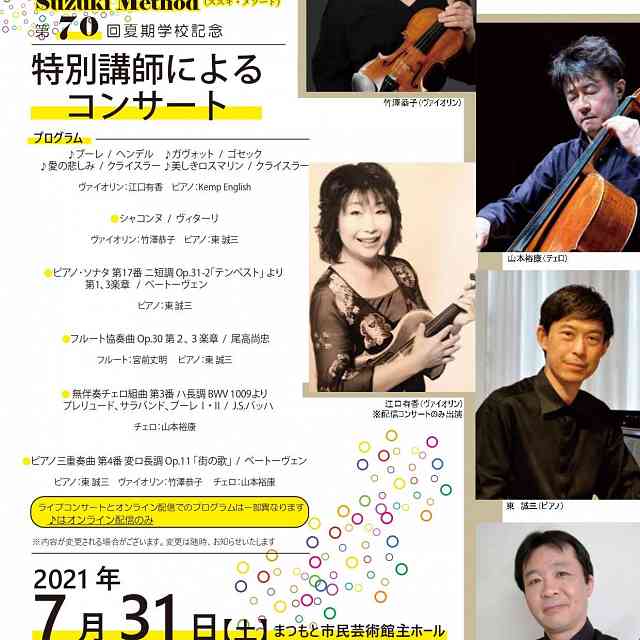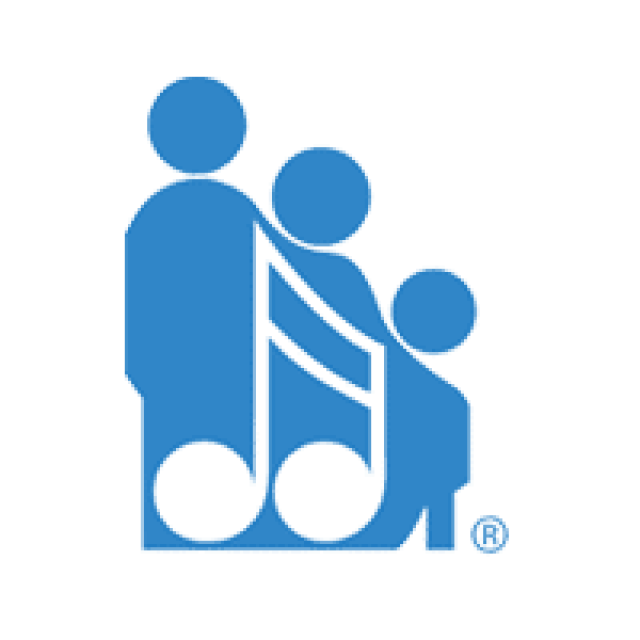This article is part two of a series about music and the brain.
Why does the brain have wrinkles and folds? Imagine trying to fit a Sunday edition of the New York Times, the Bible, a chemistry table of the elements, and a complete Mozart symphony score into a child-sized shoe box. The only way to make it all fit would be to crumple it up in a tight ball.
We often try to simplify the brain by imagining it like a dresser with labeled drawers. There’s the drawer for my memory, there’s the drawer for my sense of humor, there’s the drawer for my vocabulary, there’s the drawer for my coordination. But our brains are incomprehensibly more nuanced and remarkable than the dresser metaphor suggests. For instance, consider the dresser drawer for language. Impact trauma, a stroke, disease, or a syndrome can lock this “language drawer” shut. Speech-language pathologists have found that sometimes music can unlock these metaphorical dresser drawers. In the second part of this series about music and the brain, we’ll meet a four-year-old little girl with a rare syndrome who began learning to play the violin as part of her speech and language therapy. We’ll see how elements of music processed in the auditory cortex act like a kind of skeleton key: through one mechanism multiple ‘drawers’ can be accessed. The bottom line? Suzuki is good for kids.
The auditory cortex is a vast, intricate network of electrical signals communicating with or stimulating multiple brain sites.
The auditory cortex can help patients in a variety of ways because of its ability to communicate with other parts of the brain. For example, the auditory cortex contributes to processes in the brain that build associations, which help four-year-old Chaney develop speech and language when she moves to language concepts embedded in song (Juntunen, M. et al. 2004, 199-214). Chaney’s auditory cortex also helps her develop phonological awareness for speech sounds: when song and pitches are used to train discernment (Dodd, B. et al. 2009, 334-345). Our auditory cortex communicates with brain processes to coordinate, recall, and repair skills that have been lost, destroyed, or delayed in their development. Dresser drawers we never thought could be reopened (or opened in the first place) are freed, or engaged, when the auditory cortex processes elements of music.
Whether an SLP who works with language for a living or a parent with a child learning an instrument, this information about the auditory cortex bears significance for the acquisition of the speech and language skills all children need. As I explained in part one of this series, music and language processes overlap in the brain (Patel, A. 2010). We know that where there is redundancy, outcomes can be better. Music helps to subserve or support processes involved in language acquisition and expression.
Consider these facts taken from the website of the American Speech-Language-Hearing Association and from Dr. Aniruddh Patel’s book, Music, Language and the Brain (Patel, A. 2010):
-
Spontaneous speech and spontaneous singing typically develop in children at approximately the same time.
-
At about 18-24 months, neurotypical children have a language spurt, start exploring three to five-word sentences, singing, and repeating rhymes.
-
Both expressions of music and language are acquired in a hierarchy from simple to complex, with each step building on the one mastered before. We don’t hand Tolstoy’s War and Peace to a three-year-old to read any more than we would ask a three-year-old with a macaroni and cheese box fiddle to play Rimsky-Korsakov’s Flight of the Bumblebee. We learn to say the alphabet letters before we learn to read them, and much later use them to code and decode whole words, then phrases, then sentences, then paragraphs, then chapters. With the music, we learn to hold the violin with the left hand and we learn to hold the bow with the right hand independently before we ever try to put them together. Thus, both musical skills and language skills are acquired in a hierarchy.
-
Music and language are universal but are also unique to different cultures.
-
Both have pitch, timbre, rhythm, durational features, require perception, are expressed with varying speed, can change meaning depending on volume/tone/emphasis, have rule-governed written symbol systems, and can be expressed alone as well as with a partner or partners.
A quick look at skills associated with each brain hemisphere can help us better understand this concept of cortical redundancy. Music and language are dual hemisphere processes, meaning music can engage language processes.
Before getting any further, let’s define the difference between a music therapist and a speech-language pathologist who uses music.
Music therapy is an accredited health care profession using the systematic application of music in the treatment of cognitive, social, communicative, behavioral, psychological, sensor-motor, and physical needs of clients. The entry-level degree to be a practicing music therapist is a bachelor’s degree from an accredited college/university, and many go on to pursue master’s-level and doctoral degrees. Music therapists cannot administer standardized assessments nor diagnose from the results of those tests. This information comes from the website of the Certification Board for Music Therapists.
Speech-language pathology is an accredited health care profession using systematic therapy techniques to treat barriers in the following areas as they relate to the impedance of communication and eating: language, speech, cognition, social skills (pragmatics), behavioral, psychological, to a degree sensory-motor (especially for feeding and swallowing), and some physical barriers (for Alternative & Augmentative Communication devices). The entry-level degree to become a certified SLP is a master’s degree, and many go on to pursue a clinical doctorate (if they wish to lead a clinic) or a Ph.D. (if they want to teach at a university). One can become a speech-language pathology assistant without a master’s degree, but they would be unable to evaluate or diagnose and, in most cases, would be required to work under the license of an SLP. SLPs can administer standardized tests and interpret them to confirm diagnoses. This information comes from the American Speech-Language Hearing Association website.
A speech-language pathologist who is also a musician is not a music therapist. Any speech-language pathologist, however, can absolutely use music and elements of music as speech-language treatment modalities. Conversely, a music therapist who also has a good grasp of language is not a speech-language pathologist. The key is to always be aware of how and why we are applying our skill sets and to respect both our own limitations as well as the experts trained in other disciplines.
In summary: what each can and cannot do
-
Speech, language, and eating: A music therapist can work alongside an SLP to create therapy tasks targeting speech and language objectives that have been assessed by the SLP, or to facilitate getting food into the mouth, but she should not try to treat these without SLP collaboration.
-
Voice: A music therapist is often a talented singer, but this does not mean she should treat vocal fold pathology without SLP collaboration and a referral from a physician. Different pathologies dictate different interventions.
-
Compositions: I can use a knitting needle to poke holes in staff paper, but that doesn’t make me a composer. I can, though, work alongside a music therapist who can create songs in certain keys and with specific rhythms and use a variety of instruments to literally move my patients in ways I cannot.
-
If the client is sensory defensive to it.
-
If the client’s impairments preclude them from being able to sense it, process it, or participate/interact with it (cognitively or physically).
-
If the therapist is unclear on the why and how behind the use of music as an SLP.
It is as important for a speech-language pathologist to know her limitations with music as a tool (#3 above) as it is to know the limitations of her patients with music as a tool (#1 and #2 above).
Music and cognition
Let’s define the word cognition to mean processing information, or intentional thinking (as opposed to daydreaming). As musicians ourselves or as parents of musicians, we intuitively know what many SLPs do not: the ways music can help us think. Music can upregulate us if we are too lethargic or downregulating us if we are too hyper. Music can help train our attention so we are better able to process information. Finally, music can help elevate our mood to make us more receptive to learning. In so far as cognition is the point at which all disciplines intersect like multiple circles in a Venn diagram, and given that music facilitates cognition, it is not a far leap to say that using music in all disciplines can help our children and patients or clients. Imagine another Venn diagram, this one of our children’s school subjects, which intersect at the ability to process information through thinking. To enhance learning, a powerful skill for teachers, parents, and therapists in many disciplines is knowing which elements of music to apply (rhythm, pitch and pitch variations, tempo of music, volume of music, duration, ensemble vs solo, lyrics, and the written symbol system of music) and knowing in which situations to do so.
Music and attention
We can think of a potter throwing clay on a wheel, where the raw clay represents information to process, the two hands represent the brain’s two hemispheres, the spinning wheel represents thinking, and the object being formed represents the result of having processed the information.
Music, mood, and memory
Two structures in the brain are believed to be involved in our emotional responses to music: the limbic system’s nucleus accumbens, and the amygdala (Saddoris M., et al. 2015, 11572-11582).
Music as a skeleton key
If you’ve read this far, hopefully, you can now understand how music can facilitate speech and language development. This article wraps up by learning more about Chaney, the four-year-old little girl with a rare syndrome that began learning to play the violin as part of her speech and language therapy. Her dad is so taken by this therapy pairing that he has rented a full-sized violin to learn alongside his daughter.
Chaney was born with HIST1H1E, a rare syndrome with clinical characteristics that vary both in type and in severity among the few who have been identified with it. These characteristics include a range of intellectual disabilities from mild to profound. As a certified speech-language pathologist, I have always found it frustrating that descriptions of disorders rarely list the syndrome’s strengths, only the barriers. In the case of HIST1H1E, so little is known that it’s difficult to say if being drawn to music is a common strength for this neurodivergent population or unique only to Chaney.
Remember the metaphor of the skeleton key earlier in this article? One thing is certain: music, for Chaney, is that skeleton key. As attention and memory are the bookends to all learning (Sohlberg M., et al. 1987, 117-130), music is a powerful facilitator for Chaney’s cognitive processes because it so successfully holds her attention and lifts her mood to prime her beautiful neurodiverse brain for learning. I have taught many neurotypical children who cannot pay attention or maintain engaged joy as well or as long as Chaney can. Here are just a few examples of how learning to play the violin is helping her speech and language:
-
When we cross the center of our body with the right hand to the left side or vice versa, it’s called “crossing midline.” It is an action that helps strengthen connections of neural pathways across hemispheres. Moving her bow from upbow to downbow crosses midline multiple times each lesson.
-
Being able to follow verbal directions is an important school readiness skill. Asking her to put her violin in “rest position” is following directions and prepares her for instructions to come.
-
Understanding prepositions is a language skill. “Put your fiddle under your arm, under your chin, put the bow on your head, let’s put your bow under the chair next to the desk,” etc. We also hold just the bow and move it to match the prepositions in songs like Twinkle.
-
Speech sound discrimination is an important skill for her to be able to monitor and self-correct her own speech production. I play my violin in our sessions to help drive the points home: loud vs soft, high vs low, fast vs slow, same vs different.
These are just a handful of ways the violin is helping Chaney’s speech and language development. In March of 2021, she graduated from a Mac & Cheese box fiddle with a paint stir stick for a neck to renting a real ¼ size violin. Chaney is getting excellent speech-language therapy from another SLP in town; while the therapist does not use music, it’s clear she is a gifted SLP who is helping Chaney make great communication gains. The family has asked me to continue with Chaney as “just” a violin teacher instead of as a speech-language pathologist. In some ways, it feels strange to be wearing only my violin teacher hat again, but in some ways, it feels like coming home. How does Chaney feel about it? The smile on her face says it all.
What adventures Chaney may have through music, and how the violin may impact her life in the years ahead, none of us can say. There is still so much neurological frontier yet to discover and explore about music and its role in brain functions. In the words of Jessica Phillips-Silver, “Ultimately musicians and scientists together can illuminate the importance of music and movement for the human mind” (Phillips-Silver, J. 2009, 239-314). So what’s music got to do with it? The answer: pretty much everything.
Websites
The Certification Board for Music Therapists: www.cbmt.org
The American Speech-Language Hearing Association: www.asha.org
References
-
Mo Li, Ji-hui Lyu, Yi Zhang, Mao-long Gao, Wen-jie Li, Xin Ma (2017). The clinical efficacy of reminiscence therapy with mild-to-moderate Alzheimer disease: Study protocol for a randomized parallel-design controlled trial. Medicine, 1-7.
-
Thaut, M., Rice, R., Braun Janzen, T., Hurt-Thaut, C., McIntosh, G. (2018). Rhythmic Auditory Stimulation for reduction of falls in Parkinson’s Disease: A randomized controlled study. Clinical Rehabilitation; 33 (1), DOI: 10.1177/0269215518788615.
-
Nelson A, Schneider D, Takotah J, Sakurai K, Wang F, Mooney R. (2013). A circuit for motor cortical modulation of auditory cortical activity. The Journal of Neuroscience; 33(36), 14342-14353.
-
Schlaug, G. (2016). Melodic intonation therapy. Neurobiology of language, 1015-1023.
5.6. Juntunen, M., Hyvonen, L. (2004). Embodiment in musical knowing: how body movement facilitates learning within Dalcroze Eurhythmics. British Journal of Music Education; 21 (2), 199-214.
-
Dodd, B., Crosbie, S., McIntosh, B., Holm, A., Liddy, M., Fontyne, K., Pinchin, B., & Rigby, H. (2009). The impact of selecting different contrasts in phonological therapy. International Journal of Speech-Language Pathology; 10 (5), 334-345, DOI:10.1080/14417040701732590.
-
Patel, A. (2010). Music, Language, and the Brain (1st Edition). Oxford University Press.
-
Mizener, C. (2008). Enhancing Language Skills Through Music. General Music Today: SAGE Journals; DOI.org/10.1177/1048371308316414.
-
Saddoris, M., Cacciapaglia, F., Wightman, R., Carelli, R. (2015). Differential dopamine release dynamics in the nucleus accumbens core and shell reveal complementary signals for error prediction and incentive motivation. The Journal of Neuroscience; 35(33), 11572-11582.
-
Clore G, Huntsinger J. (2007). How emotions inform judgment and regulate thought. Trends in Cognitive Science; 11(9), 393-399.
-
Takenouchi, T., Uehara, T., Kosaki, K., Misuzo, S. (2018). Growth pattern of Rahman syndrome. American Journal of Medical Genetics Part A; 176 (3), 712-714.
-
Sohlberg, M., Mateer, C. (1987). Effectiveness of an attention-training program. Journal of Clinical and Experimental Neuropsychology; 9 (2), 117-130.\
-
Phillips-Silver, J. (2009). On the meaning of movement in music: Development and the brain. Contemporary Music Review; 28 (3), 293-314.









